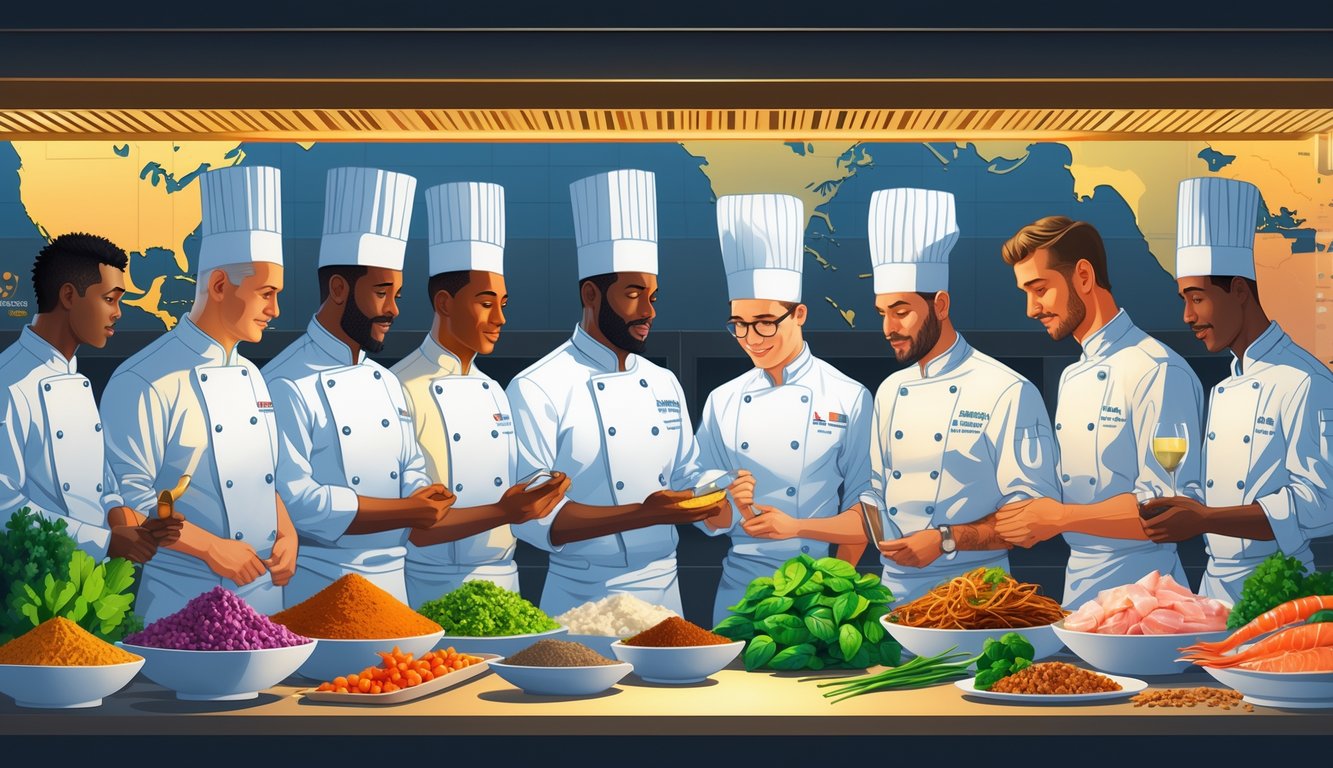
Sourcing High-Quality Ingredients
Every time I redo the menu, I’m buried in supplier calls, label checks, and muttering about “quality over quantity” as prices creep up. Sourcing high-quality ingredients is not glamorous. It’s late-night Google rabbit holes, haggling at specialty shops, and wishing you had a private farm hookup. Nobody tells you about the headaches behind that perfect plate.
Identifying Premium Ingredients
Honestly, what does “premium” even mean? Last week, I stood in front of two baskets of baby carrots—one farmers’ market, one big-brand organic. Only difference? A little dirt. Chef Sofia in Milan says, “If it traveled farther than you drove to get here, skip it.” Sounds smart, but seasonality ruins that plan. I stick with third-party certifications (USDA Organic, Demeter), but then my go-to Sichuan pepper guy just shrugs when I ask for test results.
It’s always trust, but verify. By the time I find “premium” anchovies, I’ve got a weird rapport with my fishmonger and a grudge against supermarket tins. Still, there’s some weird joy in the hunt, even if the crew thinks I’m the only one who can spot a bad vanilla pod at ten paces.
Assessing Ingredient Quality and Consistency
Assessing quality? It’s not just slicing open an avocado and pretending you’re a judge on TV (I did that once, hated it). Inconsistency is the real battle—even the best supplier sends trash tomatoes after a bad week in Murcia. I keep spreadsheets on bruising rates for stone fruit—numbers don’t lie, unlike shiny supplier brochures.
Chef Tanaka in Tokyo? He slaps a sticker on every box: three stars, it’s staff meal; five, it’s omakase. Works, kind of, but only if you’re willing to send back whole deliveries. Ingredient quality shifts all the time. I stopped pretending you can standardize it. Now, I rely on batch tasting (raw kale, anyone?), obsessive documentation, and test bakes for flour. Nobody talks about the hours spent hunting for a reliable Dijon, but I will.
Using Specialty Stores and Online Platforms
So, it’s 10:30 a.m., and the delivery guy dumps a box of “aged 24 months” parmesan at my door. Except, I open it and—what?—it’s suspiciously squishy. Should’ve just dragged myself to the specialty store, honestly. I mean, specialty shops are a weird gamble—sometimes you walk out empty-handed, sometimes the stockroom guy just shrugs and slides you a kilo of Calabrian chilies like it’s some sort of secret handshake. I tried four times to get those from the main distributor, nothing. But the Italian grocer? Had more than he knew what to do with.
But, okay, online platforms aren’t always a total disaster. Plenty of niche sites—if you’re willing to play Russian roulette with your budget—get rave reviews (I stalk Trustpilot like it’s my job). The ingredient selection is wild: dried Iranian limes, Buddha’s hand, finishing salts that sound like they were mined by elves. But verifying this stuff? I’m always squinting at batch numbers, Googling country-of-origin codes, texting chef buddies for the real dirt. I don’t trust anyone, honestly. My current system: specialty shops for anything perishable, online bulk orders for dry goods, and a little bit of luck. Sourcing ingredients is just a mashup of stubbornness and nosiness, and I’m not convinced anyone really has it figured out.
The Role of Seasonality and Local Sourcing
Every time I see asparagus in December, I just sigh. Chefs—especially the ones who never talk above a mumble—obsess over what’s local and what’s in season, even when the city’s chasing whatever’s trending on TikTok. Michelin kitchens love to show off their gadgets, but honestly, the real flex is knowing a carrot farmer or having some ex-banker texting you about heritage pork at 6am.
Benefits of Seasonal Sourcing
I’ve watched kitchens completely stall out over limp lettuce that spent days in a shipping container. But seasonal sourcing? It’s not magic, but it saves my butt more often than not. Fresher produce just… lasts. I’m not making this up: I had July tomatoes outlive their supermarket cousins by days (2022 F&B Waste Report says in-season spoilage dropped 21% at midscale restaurants, so I’m not crazy).
One time, a chef on TV just tossed imported rhubarb—looked like it had been sitting in a puddle. Turns out, storing stuff forever tanks the nutrients. Dr. Lien Hoang (food scientist, panelist, probably smarter than me) said, “Vitamins C and E degrade by 30% post-harvest during extended refrigerated transport.” Flavor’s not even the whole story; it’s about less microbial risk, too. And, yeah, sure, it cuts down on shipping emissions. Local plus seasonal isn’t some eco-warrior fantasy—it’s just easier.
Advancing Farm-to-Table Practices
Farm-to-table, though, isn’t just a marketing ploy. I’ve seen more invoices than tasting spoons, and the markup on “hyperlocal” cilantro is… let’s say, ambitious. Small producers? They can’t always deliver, so chefs end up juggling spreadsheets and praying for a mild winter. Culinary schools ramble about “community symbiosis,” but they never mention what happens when the only farm with decent beets gets hit with frost.
The best kitchens run on weird relationships: a farmer texting about hail at 4am, some forager dropping lion’s mane mushrooms in the alley. I’ve literally seen it. But local sourcing? Sometimes you get bugs in the greens that would make a Parisian supplier faint. Farm-to-table isn’t just a hashtag. Still, shorter supply chains actually do cut emissions—Harvard’s 2023 report said up to 33% less transport per meal. Not that anyone’s arguing with that, even if the parsley shows up muddy and the farmer won’t stop texting about the weather.



